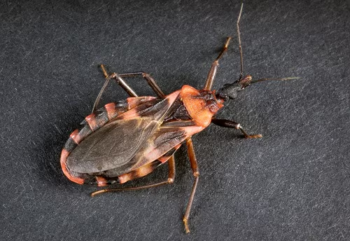The popular saying goes “we are what we eat.”
This is why experts often emphasize how important it is to have a balanced diet. But what does this really mean?
March is National Nutrition Month, a perfect time to consider what you’re putting on your plate and review healthy eating habits, if you don’t already know.
“Proper nutrition should include items from all five food groups,” said Wilma Wooten, M.D., M.P.H., County public health officer. “A balanced diet and being physically active are key to maintaining a healthy weight and preventing chronic illnesses such as heart disease, cancer and type 2 diabetes.”
Through its Live Well San Diego initiative, the County and its many partners aim to improve the health and quality of life of area residents by increasing their awareness of chronic disease and encouraging them to be physically active and eat healthy foods.
“Having access to healthy foods is extremely important,” added Naomi Billups, public health nutrition manager for the County Health and Human Services Agency. “A balanced diet can boost energy levels, help you control your weight and make you look and feel great.”
The calorie intake varies for men and women and whether they are active or lead sedentary lifestyles. Many other personal health factors may affect your specific diet. However, as part of general guidelines for a 2,000 calorie per day diet, here is what nutritionists and health experts recommend you do.
First, think of your calorie intake for one day as a plate full of food and separate it in halves.
One half of your plate should consist of fruits and vegetables and the other half should be full with grains—mostly whole grains—and proteins. Also, don’t forget your dairy products which contain important nutrients such as calcium, potassium and vitamin D.
Let’s take a closer look at the five food groups and the types and amounts you should eat.
Vegetables
Vegetables are full of essential vitamins and minerals. Dark, leafy greens—such as spinach, kale, green beans, broccoli, and collard greens—generally contain the most nutrition and should be eaten at every meal. 4-5 servings per day (Serving = 1 cup raw leafy vegetables (about the size of a small fist).
Fruits
Fruits are a great source of nutrition and make quick and tasty snacks. If possible, choose fruits that are grown in your area. They are fresher and provide the most nutrients. Dried and frozen foods are also great. If you buy canned fruits they should be in water or 100 percent juice. 4-5 servings per day (Serving = 1 medium fruit (about the size of a baseball) or 1/4 cup dried fruit).
Grains
Whole grains are highly recommended because the outer shell—removed in items with refined flour—contains the majority of the grain’s nutrition. Eat whole-grain breads, cereals and pastas and choose products that name whole grain first on the ingredient list. 6-8 servings per day (Serving = 1 slice bread or 1 oz dry cereal).
Proteins
Meats, eggs and poultry, as well as seafood, beans and peas, are great sources of protein, which are essential for proper body functioning. Lean, low-fat and skinless meats such as chicken, fish, and certain cuts of beef and pork are a great option. 5 ½ ounces per day (Serving = 3 oz cooked meat (about the size of a computer mouse) or 3 oz grilled fish).
Nuts and beans, such as lentils, peas, and almonds are also good sources of protein. Also consider tofu and other soy-based products, which are excellent sources of protein.
Dairy
Dairy products give you calcium, vitamin D, and other essential nutrients. But, they are also major sources of fat, so choose reduced-fat or fat-free cheeses, milk, and yogurt. If you are lactose intolerant, try lactose-free milk and soymilk products. 2-3 servings per day (Serving = 1 cup fat-free or low-fat milk or yogurt or 1 and 1/2 oz fat-free or low-fat cheese).






